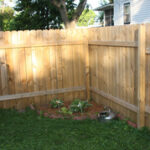Collect old encased windows, lumber, lattice, hardware, and cement from buildings, and patios that are being renovated. A neighbor may be updating to new energy efficient window panes, or breaking out cement porches in order to brick a patio. A relative may want an old shed taken down. You can also tap in to these resources by making fliers, and then pin them to cork boards around town. Ask family, friends and neighbors to spread the word about your project; or you may advertise your material list in the newspaper.
Remove dirt and paint from the old windows, pulls and hinges. Make repairs to cracks or separated frames, and pull nails from the lumber.
Lay out your greenhouse design using the windows you have gathered. Make a plan that optimizes the use of windows that open. These windows should be installed where they will create a cross breeze. Draw a guide and note your measurements.
A pent shed roof is the easiest roof to build. It is sloped from front to back. To get the pitch, measure up eight inches for every twelve inches in, or you can use an angle finder tool to determine the angle of the roof. Use deck screws to make a movable greenhouse that is easy to take apart.
Frame together the 2 by 4 walls, headers, redwood 2 by 4 and the 4 by 4 corner posts. The weight of the completed building made of windows will cause the studs to lean or bow if you use smaller framing material. Brace the walls as you stand and connect them. Redwood is the most weather resistant wood, so these 2 by 4 sit on the ground as seal plates. Make sure all the walls are level and then install the windows.
“To prevent your roof from sagging, install 2 by 4 twenty four inches apart, and then run 1 by 4 across the two by fours spaced every two feet. If you live in a cold climate, window panes on the greenhouse roof will collect snow and water and leak or crack, so use corrugated roof panels.” Rodney, owner of Hudson and Sons Construction Inc., told the author in interview.
The lattice you collected is also sufficient roofing material. Cover it with a layer or two of greenhouse plastic. The last thing you will do in building your greenhouse, is install the doors. Shape and set the cement pieces in the ground as stepping stones for your greenhouse path. Now, set up greenhouse-keeping.
Protect your electric extension cords from dampness with extension cord covers. Use recycled materials. Set a box fan in the window for air circulation; and use space heaters during the winter for heat. Put a bubble fountain in a ceramic pot filled with water to add humidity and relaxing enjoyment. Bring used picnic tables in to use as work benches and potting tables. An old locker can be used to store gardening supplies. Wire from clothes hangers can be straightened and used to hang pots. Recycle ice chests with broken lids into insulated planters.
• Rodney Hudson, General building contractor, Hudson and Sons Construction Inc., Jamestown, California
www.greenhousegarden.com/gallery.htm



